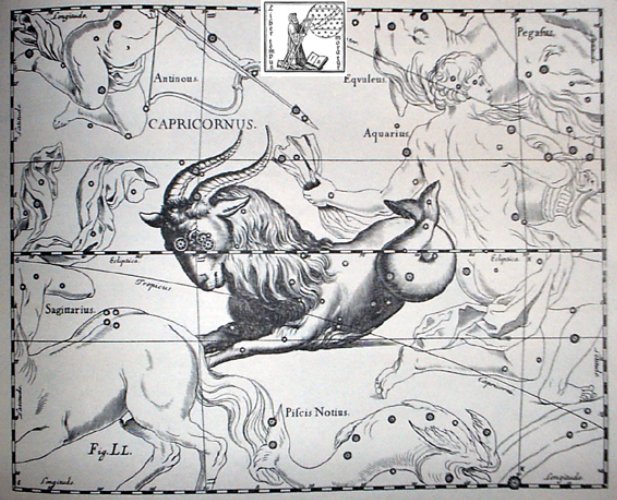Let's suppose Ka3-14 marked the same point in time-space as Ga2-26, i.e. where in MAY 16 the star τ Aquilae was at the Full Moon:
Counting with the empty glyph space at MARCH 21 on the G tablet, Ga2-27 (π) should represent day 58 (= 2 * 29). Counting with the 5 empty glyph spaces in the 1st glyph line on the K tablet, Ka3-14 (π) should represent day 60 (= 2 * 30), otherwise it would be day 55. 64 precessional days later, i.e. at the time of rongorongo, May 16 was where Atlas and Alcyone rose with the Sun - whereas 64 precessional days earlier they had been in MARCH 13 (72):
... another Alcyone, daughter of Pleione, 'Queen of Sailing', by the oak-hero Atlas, was the mystical leader of the seven Pleiads. The heliacal rising of the Pleiads in May marked the beginning of the navigational year; their setting marked its end when (as Pliny notices in a passage about the halcyon) a remarkably cold North wind blows ... (Robert Graves, The White Goddess) I could never make sense of the month 'May' in this statement, I could not make it quite fit with my heliacal days. But Graves maybe used the Gregorian calendar and then ║May would have stretched from Algol to Cursa, where the Eridanus river ended at Rigel:
Although from the perspective north of the equator it looked as if Eridanus flowed out from the foot of Orion:
In both views Orion was located between the pair of rivers (like Mesopotamia). From Cursa to Betelgeuze there were *24 (APRIL 14) - *12 (APRIL 2) = 12 days.
In Roman times 'May was beginning at heliacal Aldebaran and ending when Gemma culminated at midnight:
The Explorers probably reached Easter Island in ║June 1, i.e. 23 days earlier than 'June 1. 27 - 4 = 23. ... Vaitu Nui 25 (115) - (64 - 41) = 92 (APRIL 2) and 92 (APRIL 2) + 60 = 152 (║June 1) ... Graves: ... Gronw Pebyr, who figures as the lord of Penllyn - 'Lord of the Lake' - which was also the title of Tegid Voel, Cerridwen's husband, is really Llew's twin and tanist ... Gronw reigns during the second half of the year, after Llew's sacrificial murder; and the weary stag whom he kills and flays outside Llew's castle stands for Llew himself (a 'stag of seven fights'). This constant shift in symbolic values makes the allegory difficult for the prose-minded reader to follow, but to the poet who remembers the fate of the pastoral Hercules the sense is clear: after despatching Llew with the dart hurled at him from Bryn Kyvergyr, Gronw flays him, cuts him to pieces and distributes the pieces among his merry-men. The clue is given in the phrase 'baiting his dogs'. Math had similarly made a stag of his rival Gilvaethwy, earlier in the story. It seems likely that Llew's mediaeval successor, Red Robin Hood, was also once worshipped as a stag. His presence at the Abbot's Bromley Horn Dance would be difficult to account for otherwise, and stag's horn moss is sometimes called Robin Hood's Hatband. In May, the stag puts on his red summer coat.
Llew visits the Castle of Arianrhod in a coracle of weed and sedge. The coracle is the same old harvest basket in which nearly every antique Sun-god makes his New Year voyage; and the virgin princess, his mother, is always waiting to greet him on the bank.
As has already been mentioned, the Delphians worshipped Dionysus once a year as the new-born child, Liknites, 'the Child in the Harvest Basket', which was a shovel-shaped basket of rush and osier used as a harvest basket, a cradle, a manger, and a winnowing-fan for tossing the grain up into the air against the wind, to separate it from the chaff.
Which reminds me about: 'When a Central Australian Aranda youngster is between ten and twelve years old ... he and the other members of this age group are taken by the men of the village and tossed several times into the air, while the women, dancing around the company, wave their arms and shout ...' (Campbell) The worship of the Divine Child was established in Minoan Crete, its most famous early home in Europe. In 1903, on the site of the temple of Dictaean Zeues - the Zeus who was yearly born in Rhea's cave at Dicte near Cnossos, where Pythagoras spent 'thrice nine hallowed days' of his initiation - was found a Greek hymn which seems to preserve the original Minoan formula in which the gypsum-powdered, sword-dancing Curetes, or tutors, saluted the Child at his birthday feast. In it he is hailed as 'the Cronian one' who comes yearly to Dicte mounted on a sow and escorted by a spirit-throng, and begged for peace and plenty as a reward for their joyful leaps. The tradition preserved by Hyginus in his Poetic Astronomy that the constellation Capricorn ('He-goat') was Zeus's foster-brother Aegipan, the Kid of the Goat Amalthea whose horn Zeus also placed among the stars, shows that Zeus was born at mid-winter when the Sun entered the house of Capricorn.
The date is confirmed by the alternative version of the myth, that he was suckled by a sow - evidently the one on whose back he yearly rode into Dicte - since in Egypt swine's flesh and milk were permitted food only at the mid-winter festival. That the Sun-gods Dionysus, Apollo and Mithras were all also reputedly born at the Winter solstice is well known, and the Christian Church first fixed the Nativity feast of Jesus Christ at the same season, in the year A.D. 273. St. Chrysostom, a century later, said that the intention was that 'while the heathen were busied with their profane rites the Christians might perform their holy ones without disturbance', but justified the date as suitable for one who was 'the Sun of Righteousness'. Another confirmation of the date is that Zeus was the son of Cronos, whom we have securely identified with Fearn, or Bran, the god of the F month in the Beth-Luis-Nion. If one reckons back 280 days from the Winter Solstice, that is to say ten months of the Beth-Luis-Nion calendar, the normal period of human gestation, one comes to the first day of Fearn. (Similarly, reckoning 280 days forward from the Winter Solstice, one comes to the first day of the G month, Gore, sacred to Dionysus; Dionysus the vine and ivy-god, as opposed to the Sun-god, was son to Zeus.) Cuchulain was born as the result of his mother's swallowing a may-fly; but in Ireland may-flies often appear in late March, so his birthday was probably the same ... (The White Goddess) Thus there was no real difference between ║March and MAY. They represented the same month in the time-space defined from the stars and therefore the year should in principle have only 10 months. The creator of the G text has placed 2 'outside' months at the end of side b - from JANUARY 19 (384) to MARCH 21 (445):
|
||||||||||||||||||||||||||||||||||||||||||||||||||||||||||||||||||||||||||||||||||||||||||||||||||||||||||||||||||||||||||||||||||||||||||||||||||||||||||||||||||||||||||||||||||||||||||||||||||||||||||||||||||||||||||||||||||||||||||||||||||||||||||||||||||||||||||||||||||||||||||||||||||||||||||||||||||||||||||||||||||||||||||||||||||||||||||||||||||||||||||||||||||||||||||||||||||||||||||||||||||||||||||




























